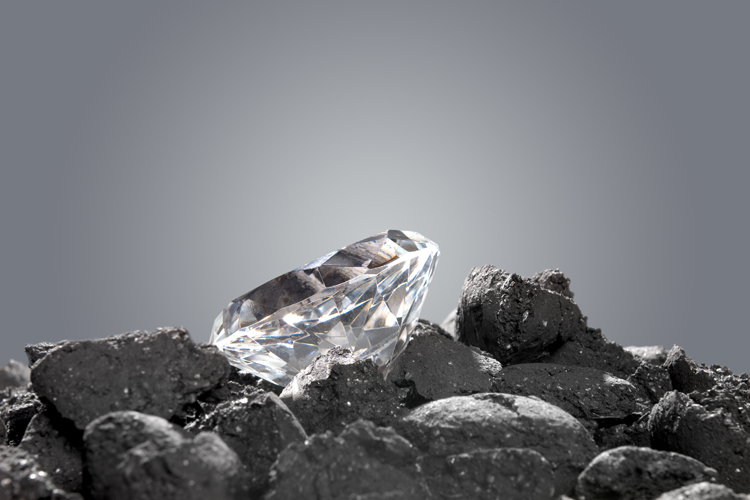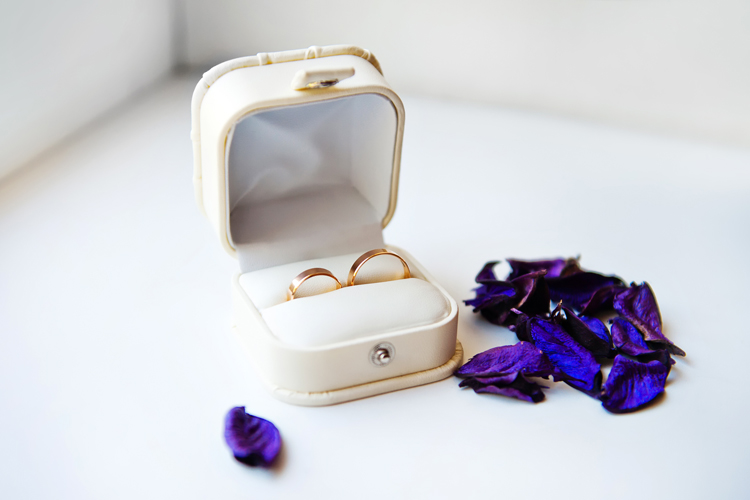Ruby, the “king of precious stones,” is the red and most valuable variety of corundum, an oxide of aluminum.
The second hardest mineral after diamond, this fiery gem can reach the highest price per carat of all colored gemstones.
Ruby, along with sapphire, is a gem-quality variety of corundum. Pure corundum is colorless.
The intense and rich red coloration of ruby is due to the presence of traces of chromium. The more chromium present in the gem, the more intense the red color.
Ruby crystals tend to form in hexagonal prisms, occurring in metamorphic and igneous rocks. They can also be discovered in alluvial deposits after eroding from their primary deposits.
The crystals are usually small because chromium has an inhibiting effect on the gem’s growth. Specimens over ten carats are very uncommon, making larger rubies significantly more valuable.
The price per carat increases even more with the size of fine-quality rubies, which rarely occur over one carat.
The name ruby derives from the gem’s color: rubeus, in Latin, means “red.” In Hindu tradition, it has always been considered the most valuable gemstone, and in Sanskrit, it is called Ratna Raj, the “king of precious stones.”
The color is the most important aspect of ruby, as it can highly affect its value.
The most prized color is a pure, saturated, and vivid red with a hint of blue (blood-red). The color of ruby varies within each deposit, so it is not possible to determine the source of the gem by its coloration.
Fine-quality ruby is neither too light, as it can be considered pink sapphire, nor too dark because the dark color may impact negatively on the gem’s shine.
Ruby forms a continuity in color with sapphire, leading to a debate over the line separating a ruby from a pink sapphire.
Inclusions are very common in natural rubies and don’t always mean low quality.
However, highly visible inclusions or inclusions that affect the gem’s shine, transparency, or durability will reduce its value.
Some inclusions may actually favor the gem’s appearance. Included rutile needles can produce a soft sheen, called silk, and a rare cat’s eye effect or the very desirable asterism when cut en cabochon.
Pigeon’s Blood
The type of inclusions found in the gem also indicates its source location.
For centuries, the Mogok Valley in Myanmar has produced some of the best rubies in the world. The most remarkable color of the Mogok Valley rubies is sometimes called “pigeon’s blood.”
Very few high-quality rubies have been found in Mogok Valley in recent years, but other deposits have been discovered, and Myanmar remains one of the leading sources of ruby in the world.
Other significant fine quality deposits are in Thailand, Sri Lanka, and Tanzania. Afghanistan, Vietnam, Madagascar, Cambodia, and the USA also produce small amounts of gem-quality crystals.
Rubies have excellent hardness. They are a 9 on the Mohs scale of hardness and, once polished, display an exceptional luster, close to that of a diamond.
The shape of the crystal dictates the shape, but the most common cuts for transparent rubies are oval and cushions, with brilliant-cut crowns, and step-cut pavilions.
The less transparent stones are cut en cabochon or carved. The red color of ruby is often enhanced through heat treatment.
Gem-quality synthetics and numerous imitations are currently on the market. Ruby can be confused with other red-colored gemstones such as spinel, almandite, topaz, tourmaline, and zircon.
The stunning ruby is a symbol of good fortune and has been associated for centuries with the fire of passion, the power of life, success, wealth, and divine love.
Rubies represent secular and religious power and are often present in the royal crowns of Christian monarchs, where they evoke the blood and suffering of Jesus Christ.
It is also believed to treat blood disorders.
Famous Rubies
- The Rosser Reeves Ruby: one of the largest and best star rubies in the world, the 138.7 carats gem was found in Sri Lanka. It was donated to the Smithsonian Institution in 1965 by the advertiser Rosser Reeves. The gem is famous for its remarkable color and highly visible, defined star inclusion;
- The De Long Ruby: the 100.3-carat ruby was found in the 1930s in Myanmar and is one of the largest star rubies in the world. The stone was named after its donor, who bought it for US$21,400 then and offered it to the American Museum of Natural History in New York in 1937;
- The Liberty Bell Ruby: found in East Africa and weighing 8,500 carats, it is the world’s largest ruby ever mined. It has the shape of a miniature Liberty Bell. The piece was stolen in 2011;
- The Sunrise Ruby: the 25.6-carat Burmese “pigeon’s blood” ruby is the most expensive ruby and colored gemstone in the world and one of the rarest gems. It was sold for a record US$30 million in an auction in Switzerland;
- The Edwardes Ruby or The Ruskin’s Ruby: donated to the Natural History Museum of London by John Ruskin in 1887, this impressive uncut ruby from the Mogok region in Myanmar is about 162 carats;
- The Peace Ruby: the magnificent 43-carat “pigeon’s blood” ruby was named “The Peace Ruby” because it was discovered in 1919, at the end of World War I, in the Mogok mines of Myanmar;
- The Black Prince’s Ruby and the Timur Ruby: these beautiful gems, found in the British Crown Jewels, are actually spinels. The discovery was made in the 19th century because the distinction between ruby and other red-colored gems is relatively recent and, until that time, spinels were believed to be rubies;
Ruby | Physical Properties
Chemical Composition: Al2 O3
Cleavage: None
Color: Red
Crystal System: Hexagonal, Trigonal
Fracture: Conchoidal to Uneven
Luster: Adamantine to Vitreous
Mohs Hardness: 9
Specific Gravity: 4.0-4.1
Transparency: Transparent to Translucent




